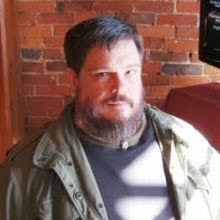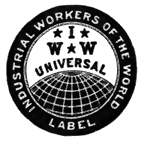The Long Emergency, S.M. Stirling, and the Transition to a Relocalized Manufacturing Economy
Generally speaking, I believe most of the building blocks of an alternative, decentralized and less energy-guzzling economy are already out there and ready to adopt. As Amory Lovins et al argued in Natural Capitalism, the main thing holding it back is cultural inertia and path dependency. When energy prices get high enough, they'll overcome that inertia. And according to Lovins et al, just the low-hanging fruit (things like replacing trucks with trains, cogenerating power from industrial waste heat, etc.) could easily eliminate more than half our current fossil fuel consumption.
On a more radical level, the building blocks are already out there for local, small-scale manufacturing economies, as well as the prerequisites for shifting a considerable portion of production to the household or neighborhood barter economy. As little known as they are, I expect skyrocketing energy prices and a collapse of much of the wage economy to make it a lot easier for those currently involved with such technologies to promote them. For example, almost nobody in the conventional building industry displays any awareness of passive solar cooling (i. e., cooling air by running intake pipes several feet underground). But some people, scattered around the country, do have it even now. And when the cost of air conditioning a conventional tract house rises to $300 a month, I expect a guy whose house is cooled for $0 a month to generate some hellacious word of mouth in surrounding neighborhoods.
Along the same lines, multimachines (cheap, multiple-purpose machine tools suitable for desktop production--if you've got a fairly big desk), however poorly known to the public at large, are out there. And they can be used to replicate themselves using local supplies of scrap metal. So the knowledge is out there, and will almost certainly spread at least into immediately surrounding pockets of population as their usefulness is demonstrated. Ditto for the demo projects at Open Source Ecology's Factor E Farm.
Sheer necessity is apt to generate a great deal of selective pressure for the identification and rapid expansion of “best practices.” However gradually the new technology spreads, we can expect it to follow the example of the mustard seed in the long run.
As I've also argued elsewhere, I expect small machine shops and backyard hobby shops to become the basis of a localized industrial economy, under pressure of necessity, when the supply chains of the centralized corporate industrial economy collapse.
S. M. Stirling's treatment of manufacturing issues in Island in the Sea of Time is extremely interesting in this regard. It's the first volume of his Nantucket trilogy, which begins with an unexplained “Event”: the transportation of the entire island of Nantucket, with all its present-day buildings and inhabitants, to the world of 1250 BC. The series recounts Nantucket's attempts to survive in the late Bronze Age—among other things, rebuilding a local industrial economy given only the on-island resources that made the transition, and the resources that can be obtained by trade in a Bronze Age world.
The core of Nantucket's reconstituted industrial economy is a basement machine shop owned by Patrick Leaton, a sort of shop-geek hobbyist, under the glorified name of Seahaven Engineering. I quote from Leaton's remarks to the Town Meeting on the resources on-hand, immediately after the Event:
“Oh, I can work up anything you want,” he said. “Give me power and bar stock or sheet steel. The problem is there's only one of me. I can do anything, but not everything.
That was a problem. Nantucket simply didn't have much industry. Seahaven was a one-man quasi-hobby; most of Leaton's living had come from his computer dealership, with the machine shop in his basement. At that, it was the sole and singular metalworking facility on the island, unless you counted the high school shop classes and the Eagle's [a Coast Guard vessel that made the transition] onboard machine shop.
Cofflin [chief selectman/town manager] pressed his fingers to his forehead. “Let's look at it this way. What have you got, what can it do, and what can you do to do more of it?”
“Ah...” Leaton frowned. “Well, I've got a 1956-type Bridgeport milling machine, with digital controls added on, an old Atlas twelve-by-thirty-six engine lathe, an Atlas horizontal milling machine, a seven-inch Ammco shaper, and I just got in a Schaublin eight-by-eighteen precision tool making lathe, a real beauty—Swiss. All light-to-medium stuff. There may be more on-island. I'll start looking.”
The head of the Nantucket Electric Company cut in. “You made those flanges for us, and some other fairly heavy work. The turbocharger, for instance.”
“Yup, but I sort of cheated—used the Bridgeport as a verticle lathe with a rotary table.” He looked around. “Forty-eight inches by twenty-nine, machined out of solid five-eighths plate—”
Cofflin cleared his throat. Leaton flushed and continued:
“Bottom line, Chief, is that I could make just about anything, including more tools; a lathe is one of the few tools that can make a copy of itself. It'll be a little awkward without a foundry, but I could make a round bar bed lathe, the Unimat type; it'll work perfectly well, just not as durable as a cast or forged bed. I'm making a tool cutter of my own right now, or was before this all happened.”
“Excuse me,” Arnstein cut in. “You're saying that eventually you could duplicate your operation, and then duplicate it again, and so forth? And that you can do pretty well any metal shape?”
“Yup,” Leaton said, obviously puzzled. “Give me the metal, and yes. Wasn't that what I was saying?”
“You could make, for example, a steam engine?”
“Well, I do that all the time—little ones, and they're working scale models. I've got machinery that can work to ten-thousandths of an inch, and Watt did it with tolerances of an eighth of an inch. I've got a nice set of Weber measuring-gauge blocks, after all. I could turn out, say, a twenty-five horsepower model in a week, maybe convert an old VW flat-type engine. Need a welder to help me with the boiler.. maybe use a propane tank... but hell, we've got a half a dozen top-notch welders and some heaving bending rolls. Bit difficult to make really big cylinders without a foundry or casting plant, but I could if you gave me a month or two to tool up. Up to a couple of hundred horsepower. But we don't have the fuel for many of those. Hell, we can't even keep the town power plant running for more than six months, no matter how we ration....”
There are also, thanks to Nantucket's craft economy, some authentic blacksmiths with small-scale iron smelting facilities, as well as pottery-makers and a glassblower. The economic conversion is aided by some marginal wind and photovoltaic generating capacity, along with some emergency backup generators and assorted fuel reserve tanks around the island. Given the replicability of his machinery, and given the feasibility of creating alternative means of generating the power to run it, Leaton has the initial traction he needs to begin building a sustainable industrial economy.
To repeat, something similar (with resources pooled along the lines Karl Hess and Colin Ward suggested with their neighborhood shops and Kirk Sale with his local repair/recycling/remanufacture facilities) is likely to be the basis of a local manufacturing economy when the supply chains of replacement parts from Whirlpool and GE dry up. Given such a distributed local manufacturing economy built from a base of small machine shops and hobbyist workshops, coupled with microenterprises (bakeries, day care centers, cab services, market gardens, microbreweries, etc.) run out of people's homes using their ordinary household capital equipment, and with liquidity provided by LETS systems if and when the present currency system collapses, I believe thriving local economies will expand to fill the gap pretty quickly under pressure of necessity.
One thing that will help the transition will be if the U.S. government, state governments, and other "hollowed out states" lack the capability of enforcing bank ownership of paper on mortgages in default, and we can transition as the banks collapse to a default system of ownership based on current possession. That, and no last-ditch effort at large-scale police statism to enforce the Digital Millennium Copyright Act and suchlike at the national level, or zoning restrictions on home-based microenterprises, neighborhood bazaars and workshops, etc. at the local level.
Even when collapses have been catastrophic, as in Argentina early in the decade, people have been extremely resilient and creative in finding ways to make things work in the face of necessity. Stirling's fictional account of the emergency construction of Nantucket's manufacturing economy assumed a sudden and catastrophic disappearance of all non-local inputs. That's a worst-case scenario, extremely unlikely.
If there were such a catastrophic event, the lesson of Stirling's account seems to be that there are a lot of small machine shops, high school metal shops, etc., all over America and the rest of the industrialized world, along with enough alternative energy and emergency backup power to take up the slack of converting such shops to off-the-grid power. Even if national and global supply chains completely shut down, no particular community would be left in the radical isolation of Stirling's Nantucket. So given the existing, widely distributed facilities that could be expanded into local manufacturing bases, it's a safe bet that some sort of decentralized manufacturing economy would survive the transition even in the worst case.
For what it's worth, I expect the collapse to be a long one (a "long emergency") taking from one to two decades, so there will be no catastrophic collapse and sudden vacuum to fill. So Stirling's scenario can be taken as a sort of a fortiori argument for the feasibility of reconstituting some sort of localized manufacturing economy over the course of a longer and more controlled crash. In that event, we are likely at the very least to have time for a learning curve like that Cuba had building an economy of neighborhood market gardeners to fill the gap when Soviet-bloc petrochemicals were cut off (applied by way of analogy to the learning curve for expanding small machine shops and backyard hobby shops into a local manufacturing base).








